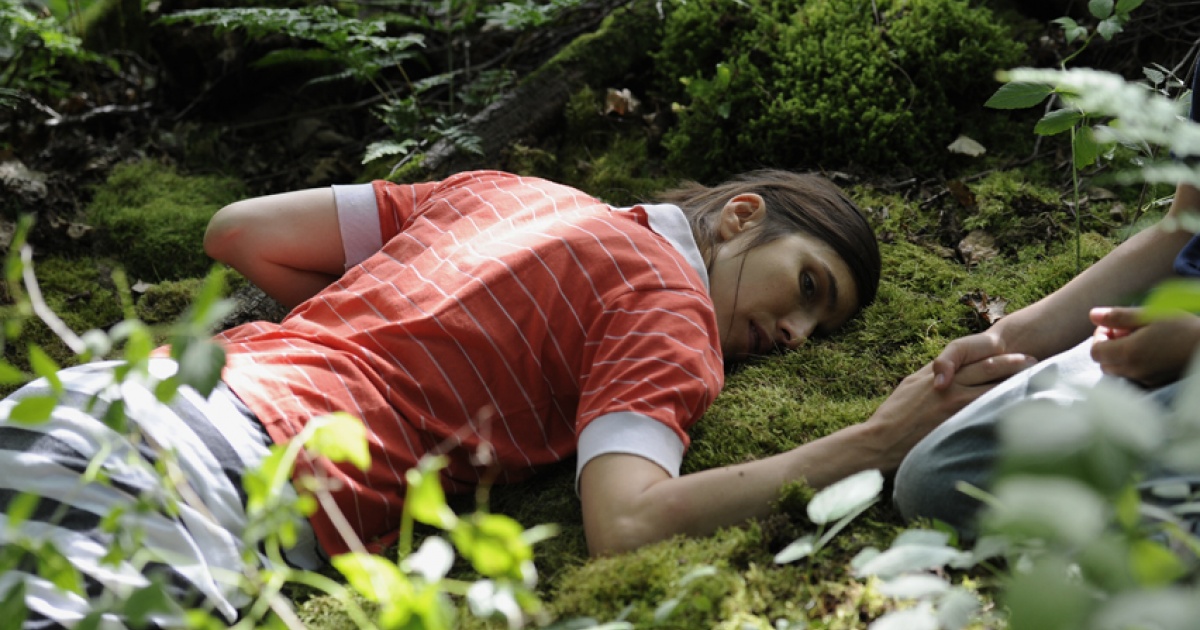The now commonly accepted name Berliner Schule (Berlin School) surfaced on the pages of the German newspaper Die Zeit in 2001, as part of Merten Worthmann’s review of Angela Schanelec’s film Passing Summer (Mein langsames Leben). Weeks later, the name was used again by film journalist Rainer Gansera in a review of Thomas Arslan’s A Fine Day (Der schöne Tag), and has become the widely credited ‘name giver’. It’s a derivative term that sits between the likes of many European ‘new waves’’ and their timeliness, and the stylistic continuations in a catch-all one like ‘film noir’. While it’s fair to say that critics often bestow such descriptions for their own ease, it’s rarely that filmmakers get together under a flag or manifesto in relation to a given name. Unlike, for example, the self-proclaimed Dogme-95 members, the so-called Berlin School filmmakers never fully got behind the label. That, of course, has not impeded film scholars, curators, and critics alike, to gather retrospectives (such as ‘The Berlin School: Films from the Berliner Schule’ at MoMA in 2013) and publish multiple books on the topic. But the critical consensus has accepted the term, not without exploring its conceptual contradictions. The first and biggest objection that stands is a methodological question: how does one unite such a diverse range of films as one singular body of work? The answer is, one doesn’t. Berlin School is a term of periphery without centre, and a cunningly deceptive one—the ‘Berlin’ bit of it does not apply for some of the filmmakers associated with the group, and the ‘School’ even less.
The ‘nuclear’ Berlin School would be composed of the few directors that came up together after graduating from the Deutsche Film- und Fernsehakademie Berlin: Christian Petzold, Angela Schanelec, and Thomas Arslan in the late 1980s, immersed in the political approaches of Harun Farocki and Hartmut Bitomsky as their teachers and mentors. Soon the Berlin School already had its ‘second wave’ folded into the fabric of German cinema, according to critics. Munich’s Academy of Television and Film (Christoph Hochhäusler, Benjamin Heisenberg, Maren Ade), Vienna Film Academy (Valeska Grisebach), University of Fine Arts Hamburg (Ulrich Köhler and Henner Winckler) also joined the ranks. The Berlin School became a label to encompass a generation of filmmakers that have received formal and practical film education—always evident by their focus on film form—and who also had their own cinephiliac interest. The film journal Revolver was a key platform for all of these filmmakers to engage in critical discussions about contemporary world cinema.
Our issue #5 takes up that methodological honesty associated with writings about the Berlin School to unfold layers of meaning around and behind the deceptively singular term. The essays that follow engage in a critical reworking of the appointed stylistic commonalities that unite filmmakers as diverse as Petzold and Schanelec, for example. Their rigorous analysis tackles issues that arise out of the films’ own engagement with their respective intellectual traditions, on the one hand, and ways of living, on the other. While each of the essays focuses on a separate filmmaker, the intertextual references are carefully outlined in a manner that represents the Berlin School as a special kind of expressive formalism.
Patrick Preziosi gives an elaborate account of the (subconscious?) referentiality permeating the films of Grisebach, Schanelec and Köhler, to pinpoint their shared cultural cognizance which underpins cinematic worlds between muted realism and oneiric serenity.
Nathasha Orlando Kappler dissects Maren Ade’s Everyone Else (2009), the biggest box office success of the Berlin School films that drew more than 180.000 people to cinemas, to bring forth the theatrical displays of relationships, and to peel off layers of performativity associated with class and heteronormative issues that have stagnated the German nuclear family.
Maximilien Luc Proctor offers an intimate reading of Angela Schanelec’s quiet poeticism, and uses her films to explore the human condition of being a ‘Berliner’. His analysis of the lived condition of the films’ characters communicates the incommunicable, relying on film as a medium to bridge the gap between language and pre-linguistic means, with the still abundance of atmospheric images that linger.
The poetics of wandering is the central theme of Debbie Zhou’s exploration of Thomas Arslan’s interest in characters that are both present and absent within their own space. In her close reading of Arslan’s A Fine Day (2001), the inaugural ‘Berlin school’ film, identity is gently scrutinised in both film aesthetics and conceptual analysis, as blending in or resisting one’s urban circumstances.
Concluding this issue, my own essay explores the particular case of Christian Petzold’s approach to symbolism, which works with the materiality of objects and functions as a narrative device. Be it a car-shaped keychain, a book, or a song, their objecthood reframes and reverbs with the stories that connect or disjunct the protagonists of his films, however different they may be. Petzold prefers to dwell on the border between mainstream and arthouse and, alongside his long-term collaborator Farocki, believes the impossibility of separation between the two to be a political statement.
The Berlin school is neither a movement, nor a trend, and it may be easier to define it negatively rather than to state what it actually is. However, the persistent reliance of the films in question on stylistic means goes hand in hand with the content they wish to explore. There is, of course, an ethical and political stance tucked away in the controlling form and content in such a way that their amalgamation is more free-flowing than its composite elements. Stern mise-en-scène, tight framing, pre-production rather than improvisation and post-production—all of the planning culminates in a picture that is closer to life than life itself.
